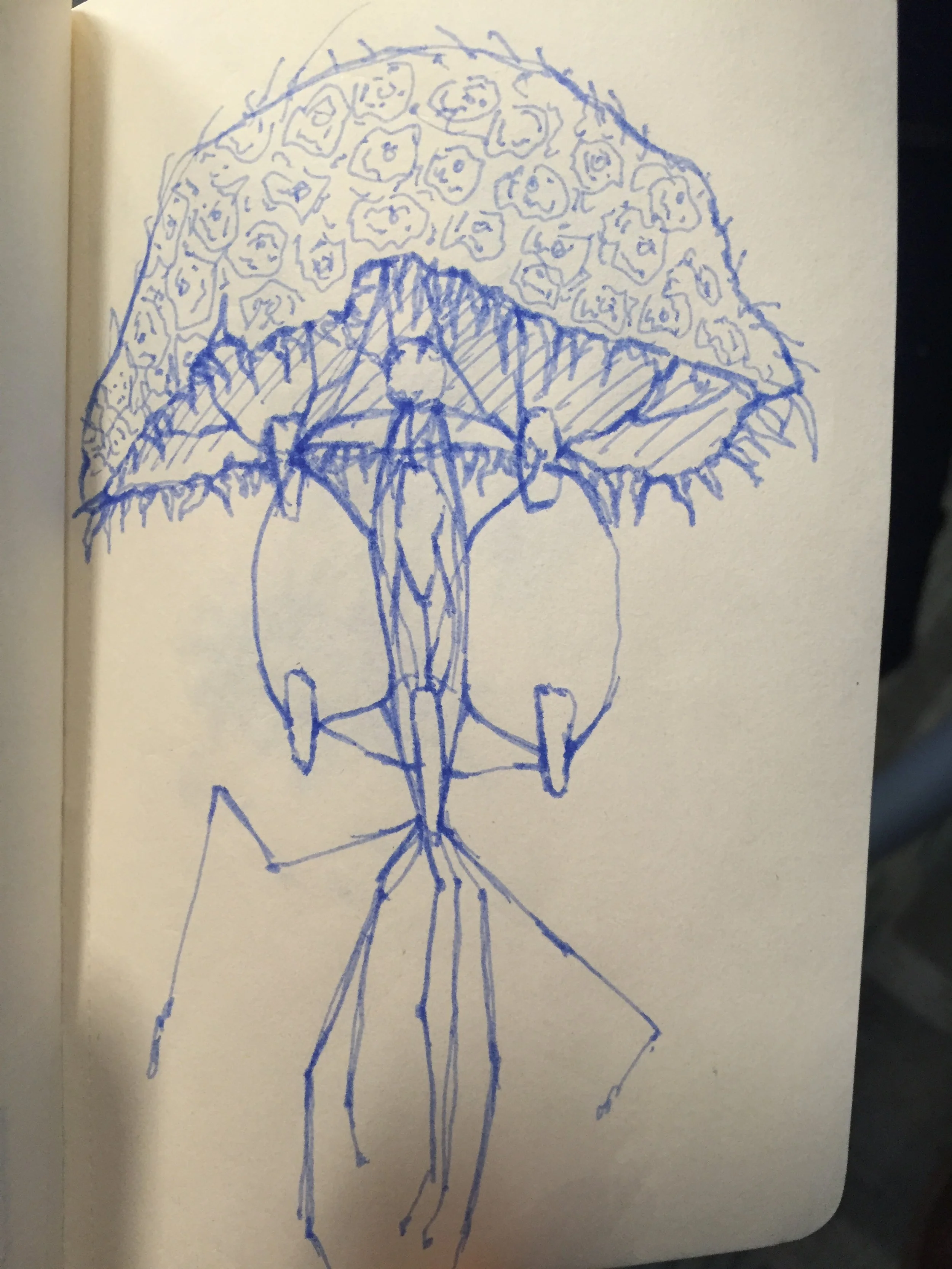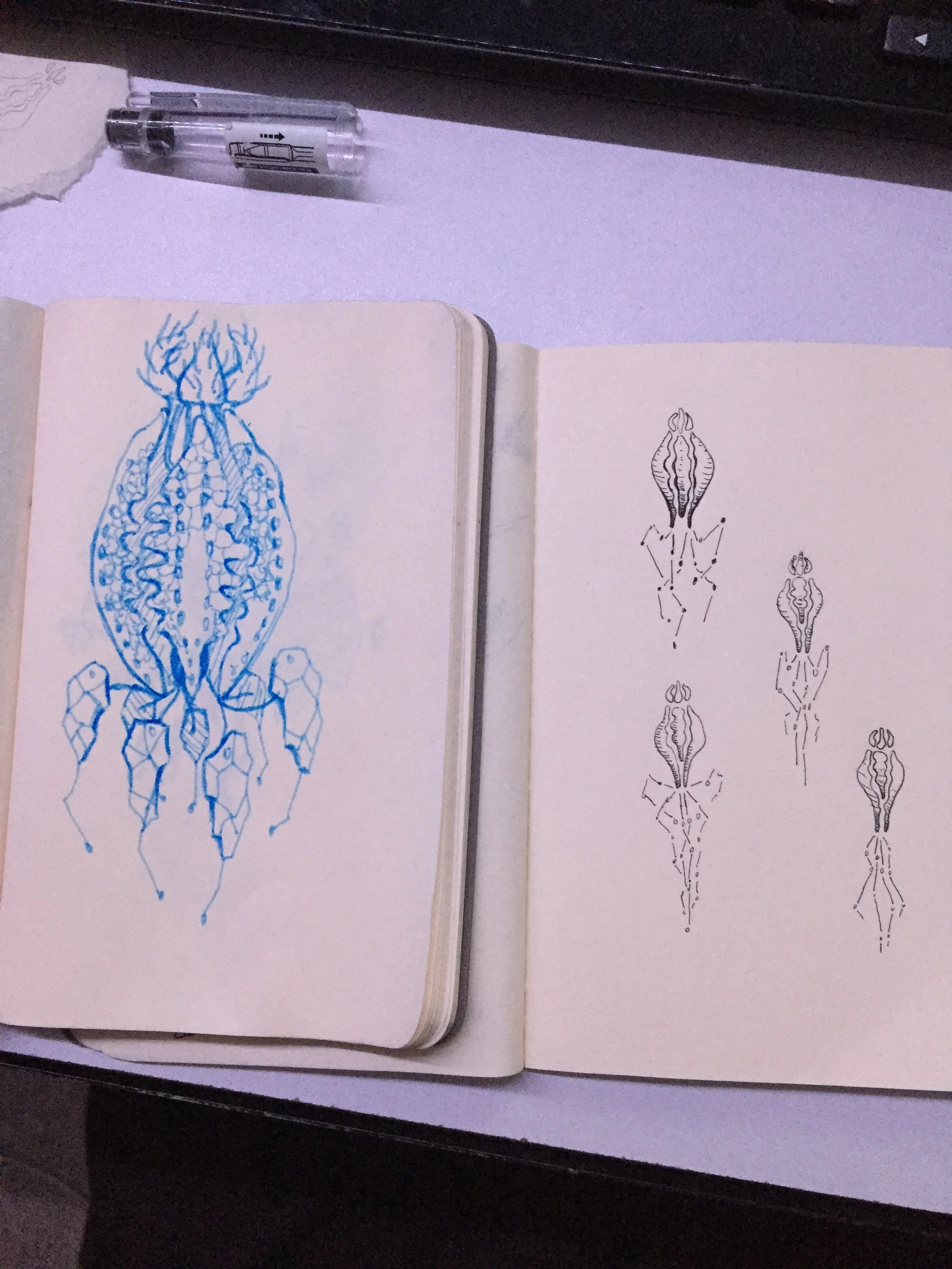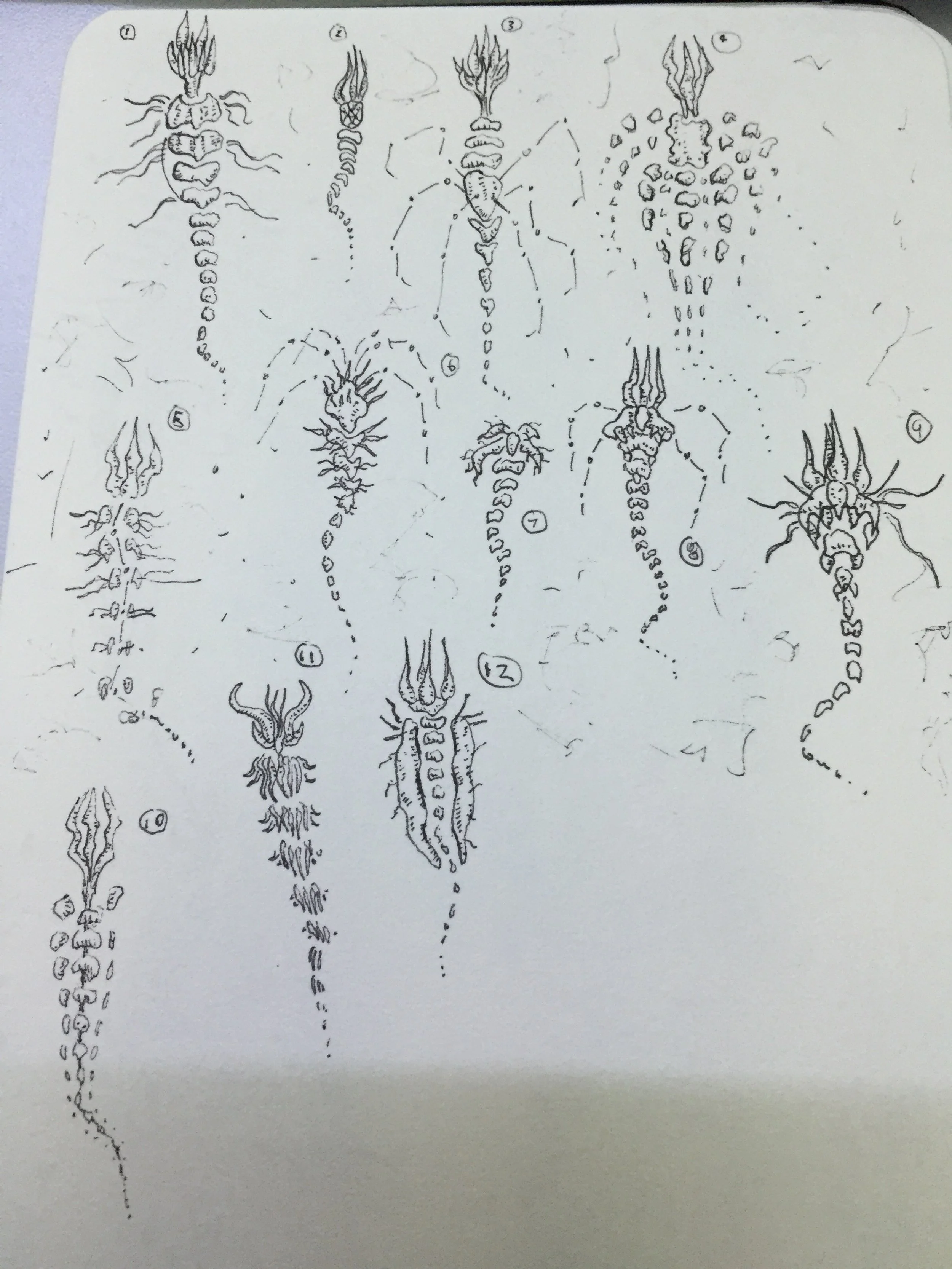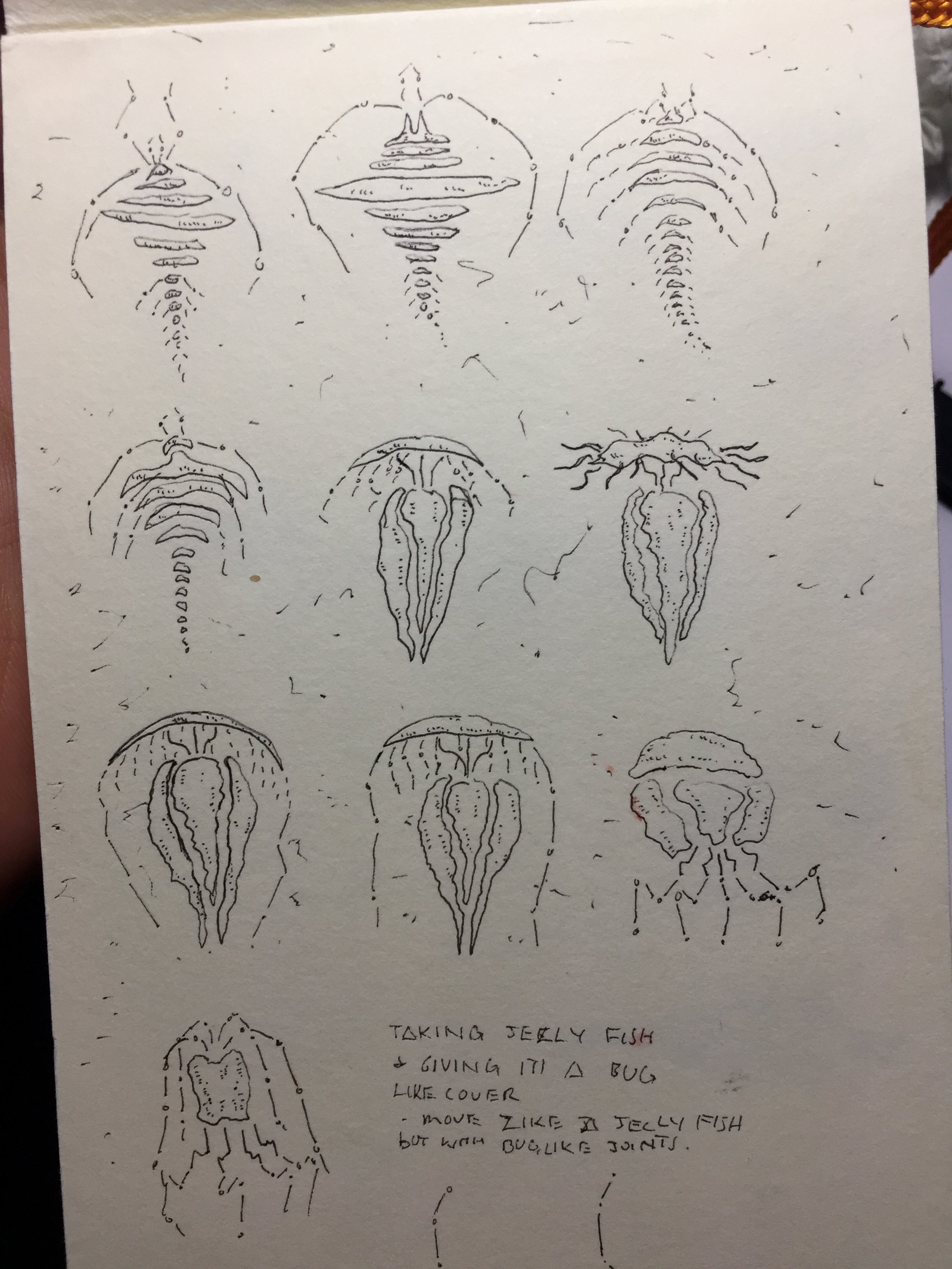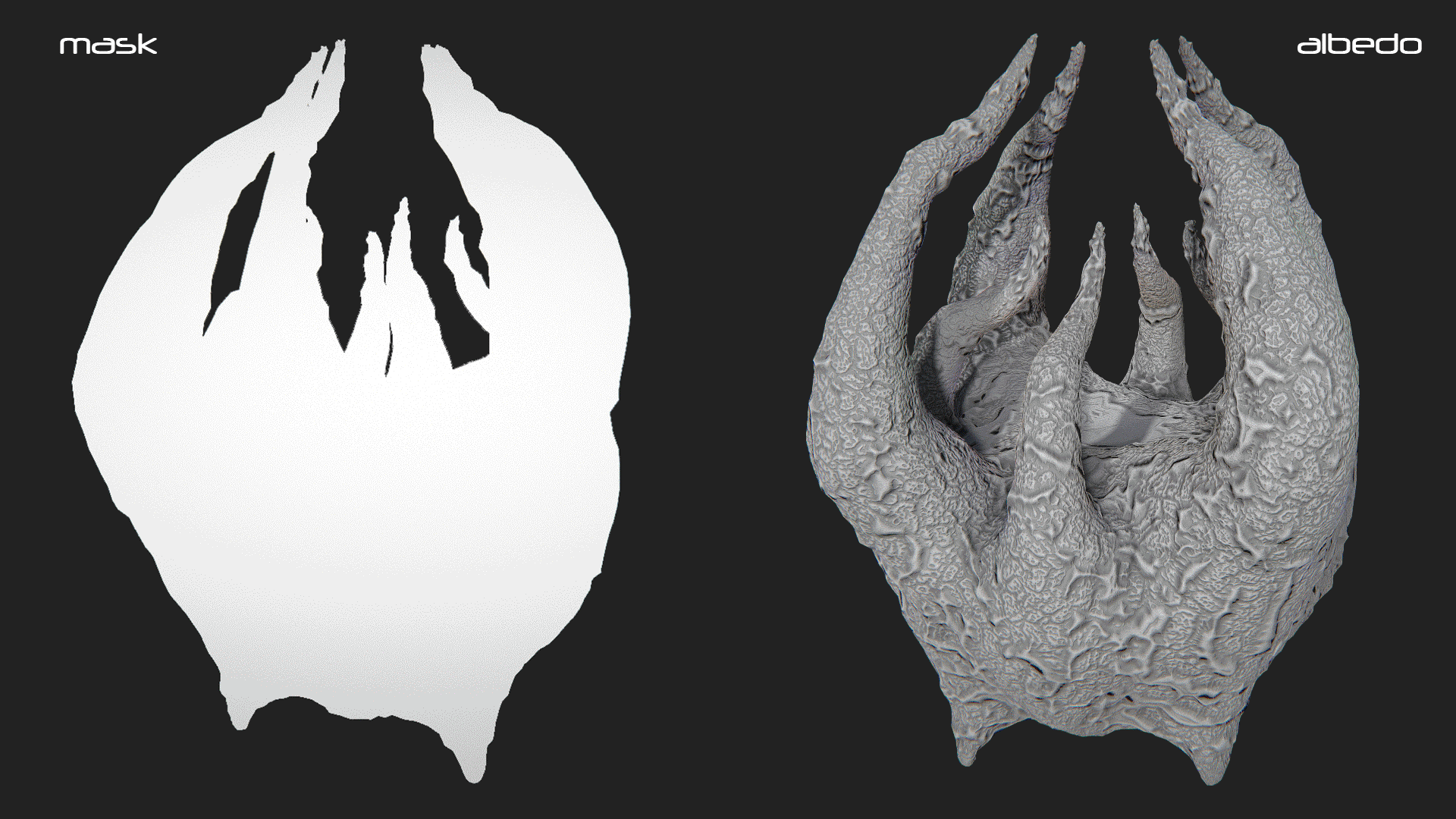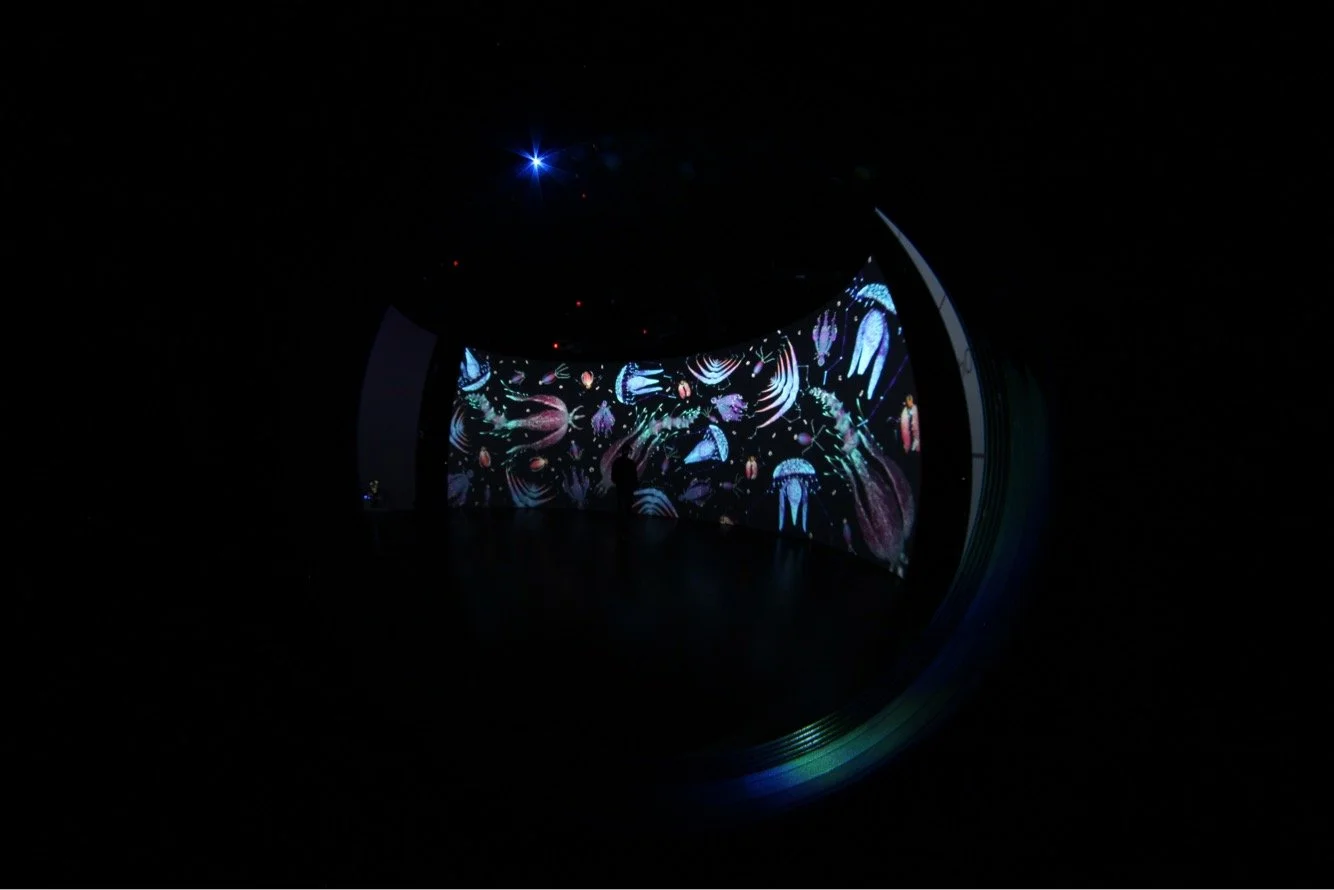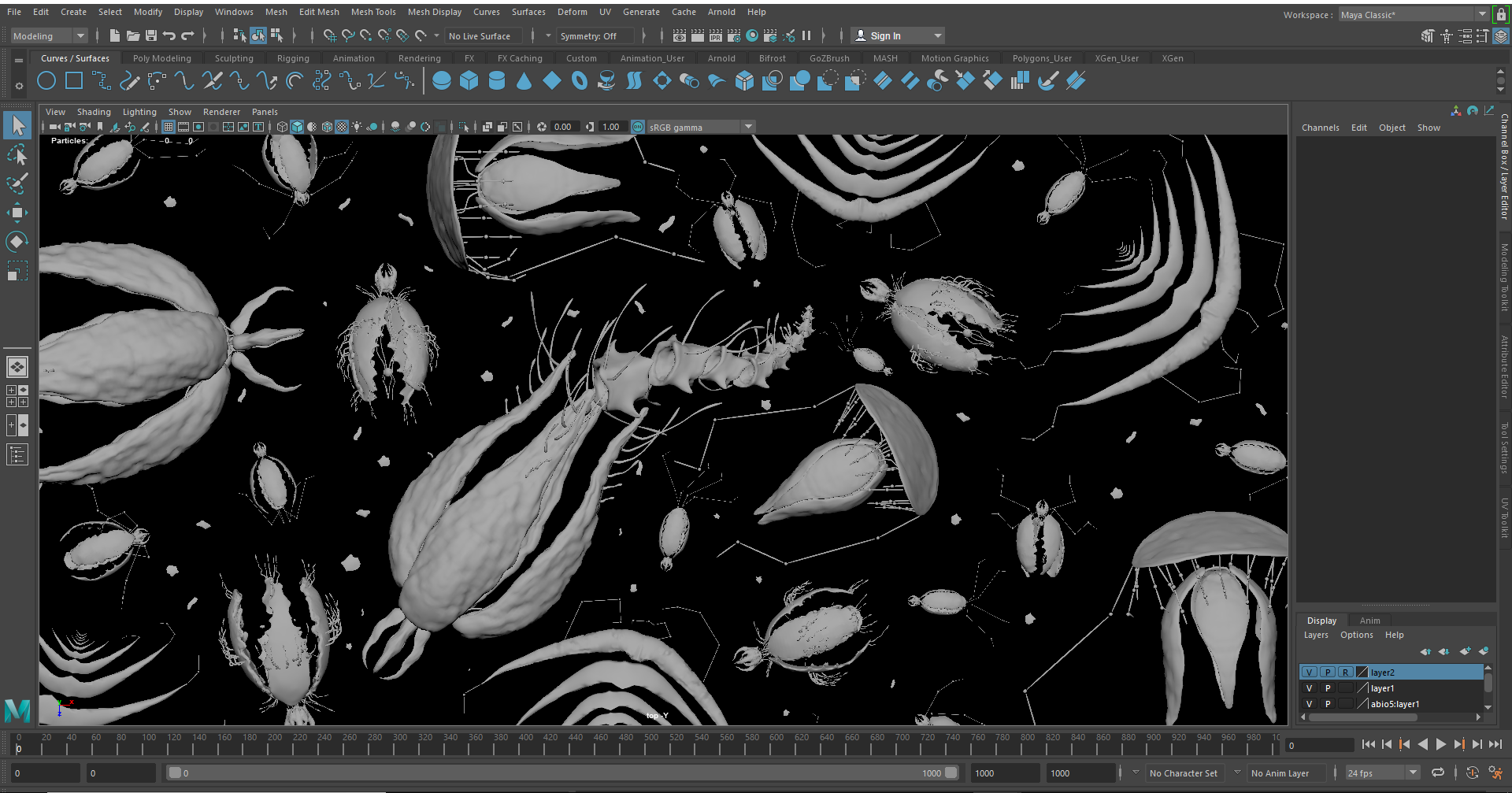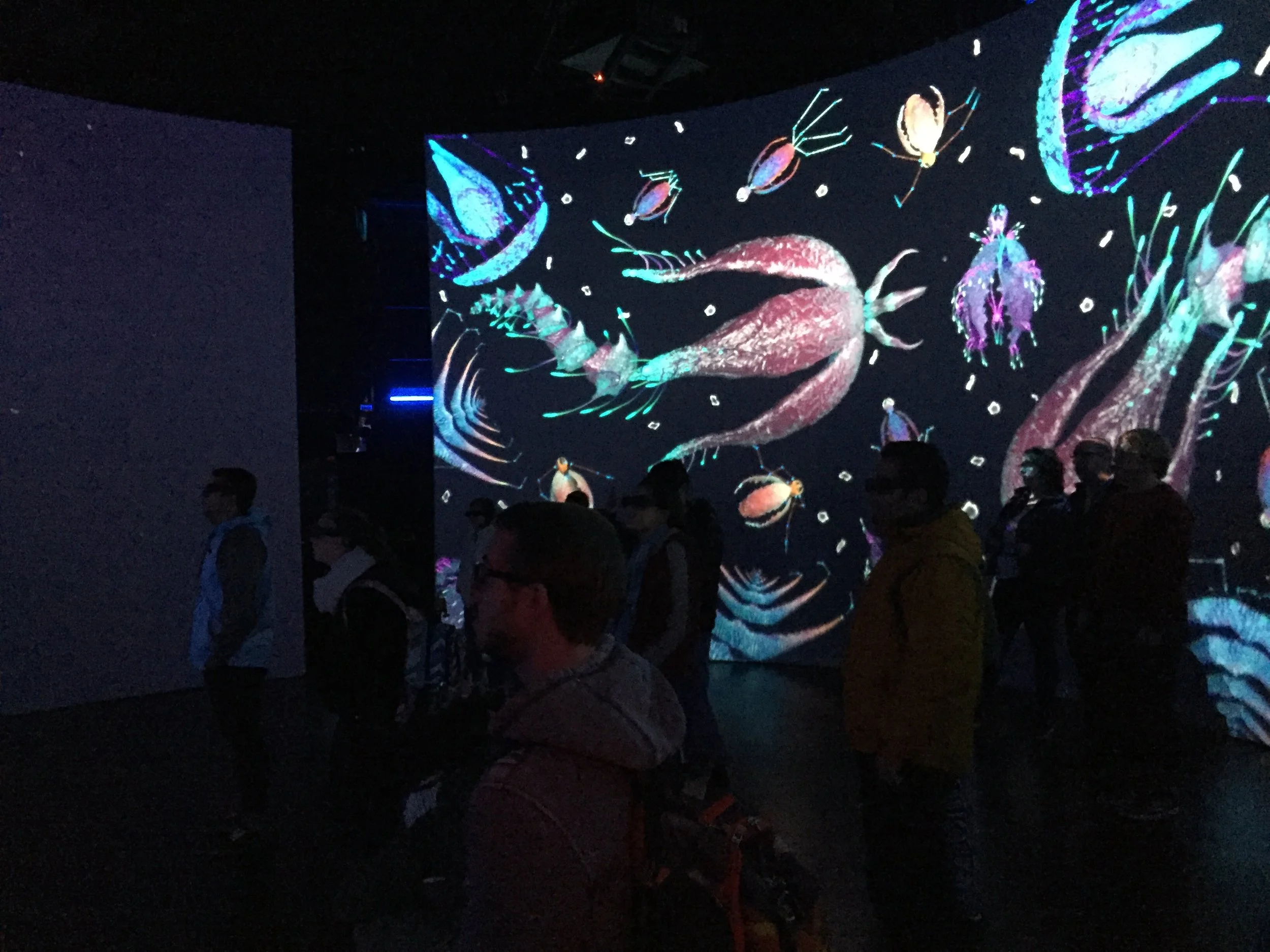
IMPERCEIVABLE WORLD
A 3D-rendered immersive experience that transports audiences into the microworld, where light, sound, and motion reveal the hidden creatures and beauty of life beyond the visible scale.

Showcased at Virginia Tech’s ICAT Cube, Imperceivable World is a stereoscopic 3D immersive experience that transforms the Cube’s cyclorama and spatial sound system into a living microcosm. Audiences step inside a cylindrical world of light, depth, and motion to explore the unseen beauty and creatures of the microworld.
Renders
This series began as a collection of spontaneous doodles, abstract forms born from curiosity about the unseen. I’ve always been fascinated by how microorganisms, in their simplicity, embody the raw architecture of life. Their shapes feel both improvised and intentional, like nature’s own sketches. Through these drawings, I explore that boundary. Where crude, minimal gestures evolve into believable anatomy, where randomness becomes function. To me, these forms are the doodles of existence the first drafts of life itself.
Process
This project began as a series of simple doodles I sketched whenever my mind wandered. Over time, those shapes evolved, gaining detail, personality, and eventually filling entire pages of my sketchbook. I knew I had to bring them to life in 3D.
I sculpted the forms in ZBrush to establish character and surface detail, then moved into Maya for retopology, UV layout, rigging, animation, and rendering. For materials and surface definition, I used Quixel and Substance Painter to create stylized yet believable textures. What started as casual drawings transformed into a fully realized animated world.
Challenges
Creating an immersive stereoscopic show for The Cube came with unique technical and creative challenges. The massive 3K x 7K render resolution, doubled for stereoscopic output, demanded extreme render efficiency and heavy optimization. I also had to learn and apply stereoscopic parallax principles while accounting for the curved Cyclorama display, which introduced distortion and depth calibration issues.
Despite these hurdles, every technical decision served a purpose: to transport the audience into a shared microworld and create a powerful sense of presence beyond the flat screen.













